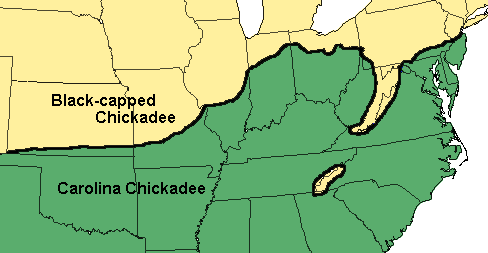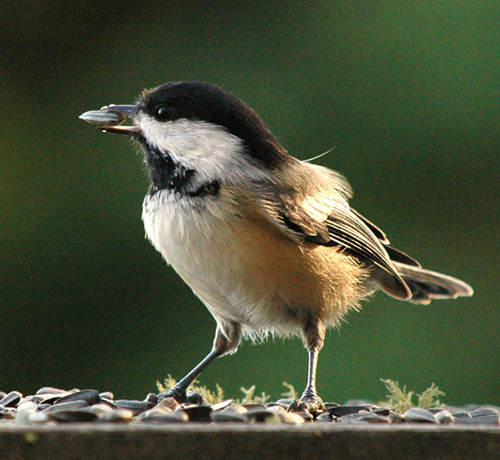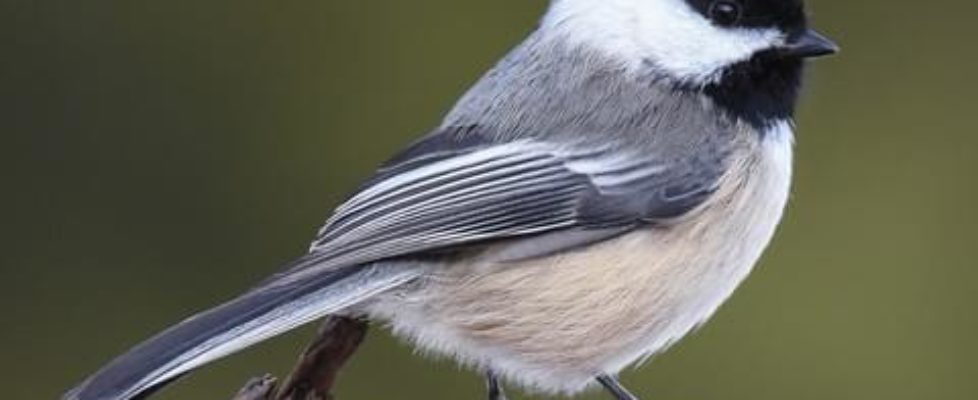The Complicated Chickadee
I admit it: I take Black-capped Chickadees for granted. I mean, I like them: They’re cute, a dependable and confiding visitor to feeders, and one of the few birds that may actually fly over when I show off my “pishing” birdcall to skeptical friends. Even so, to me at least they’ve always been more Old Reliable than Must See.
But it turns out that, as with most things, we miss a lot when we underestimate chickadees. These familiar little birds have much to teach us about taxonomy, speciation, even the evolutionary roots of birds’ learning ability.

Mexican and Chestnut-backed Chickadees.
https://www.sibleyguides.com/?s=chickadee
Currently, seven chickadee species are recognized in North America, ranging from the Mexican, which enters the U.S. almost entirely in the Sky Island mountains of Southeastern Arizona, to the Grey-headed, found only in Northwestern Canada and Alaska. Almost every spot in between has a chickadee species as well…though rarely more than one.
In divvying up the continent in this way, chickadees provide a vivid example of what Charles Darwin first demonstrated with the famous Galapagos finches and mockingbirds: How even subtle differences in geography, altitude, and food sources—like those found between New York with its Black-cappeds and Washington, D.C., where Carolinas are the rule—can cause a common ancestor to split into several different species.
Yet how split these species are remains an intriguingly open question. As a glance at a bird guide shows, the different chickadees all remain so closely related that they resemble those old “find seven differences between the two drawings” puzzles. (The Carolina Chickadee is only slightly smaller than the Black-capped; the Boreal has a brown instead of black cap; the Mountain Chickadee’s “chick-a-dee” call is a little harsher and faster than the Black-capped’s, and so on.)

Source: http://www.birdsource.org/Birds/chickadees/
Clearly these little apples haven’t yet fallen far from the family tree. But the real question is: Have they fallen at all? Because, confoundingly, in the small areas where Carolina and the Black-capped Chickadees overlap (a narrow zone running from Kansas east to New Jersey), it turns out that they interbreed freely…and produce plenty of fertile offspring.
Given that our longtime definition of “species” centers on the ability to produce fertile young, does this make Carolina and Black-capped the same species? And if so, how about their cousins, who appear no more distantly related? Could we actually be looking at a single superspecies?
These are all good questions, though not ones that birders who keep life lists might want to hear. They’re also the same questions that are now being asked about many other bird and animal species long considered separate. (Perhaps most remarkably, polar and grizzly bears turn out to be able to produce fertile offspring, a finding that feels like a harbinger for the future as climate change brings species previously isolated by distance into close proximity.)
But chickadees do more than intrigue genealogists. They’ve also caught the attention of those who study communication—even among different species.
For many small songbirds, “mobbing”—and thus calling attention to—raptors and other potential threats serves as a survival technique. Around here, Black-capped Chickadees often lead the mob, their emphatic “chicka-dee-dee-dee!” calls serving as the first sign that a hawk or owl is in the vicinity.
Their mode of communication is more complex than that, though: The birds actually signal the seriousness of the threat. The greater the danger, the more “dees” the bird appends to the original “chicka.”
When the threat is dire indeed—as with songbird-hunting owls—the chickadee may sound off with more than a twenty loud “dees.” The intensity of the calls can serve as either a warning to hide or a summons to join the mob, dictates that both fellow chickadees and other species (such as nuthatches and Downy Woodpeckers) understand and take heed of.
Chickadees have even more to teach us. How they’ve evolved to ride out northern winters is, in fact, the tale of one of the most remarkable evolutionary adaptations in the animal world.
In spring and summer, chickadees are like many other birds, eating a mix of vegetable matter (mainly seeds) and insects. Unlike most songbirds, though, they don’t migrate to warmer climes in winter. Instead, they remain reliant almost entirely on seeds left over from the growing season, a food source that may be abundant one day, inaccessible or gone the next.

Where might it store it?
To survive these realities, chickadees have evolved the ability to cache seeds, hiding them in many different locations. Sometimes a single bird will cache seeds in more than a thousand different spots.
Caches provide certain food stores, no matter the weather, and using many sites guarantees that another opportunistic seed-eater won’t discover and plunder a chickadee’s entire supply. But this remarkable survival technique provokes a question: How do chickadees find all their hiding places? How do they remember?
The answer is that they rely on their hippocampus, an area of the brain responsible for spatial organization. Simply put, it’s the part that enables them to recognize and identify where they left something.
In many species, including humans, the hippocampus serves this same function. But most of us don’t have to remember a thousand different knotholes or patches of loose bark, much less as a requirement of survival. (Simply recalling where we left the car keys is challenging enough.)
So how do the birds accomplish this herculean task? Through a remarkable evolutionary adaptation: Each year in the fall, as the chickadee gathers its trove, its hippocampus grows as much as 30 percent. It is, in effect, making room for the new memories it will need to endure the winter.
Then in the spring, as abundant new food sources appear and an unerring spatial memory is no longer such a high priority, the chickadee’s hippocampus will shrink down to its previous size. Until the next fall, when the process will repeat.
As I’ve been writing this, a chickadee has been making regular visits to the feeder out my back window. Now, as I watch it fly off in different directions with one safflower seed at a time, I know why. I’m also reminded of something deeper, more essential, about the world around us: Even in small, familiar, and—yes—adorable packages, it remains full of surprise, wonder, and unexpected new knowledge. © 2020 by Joseph Wallace



